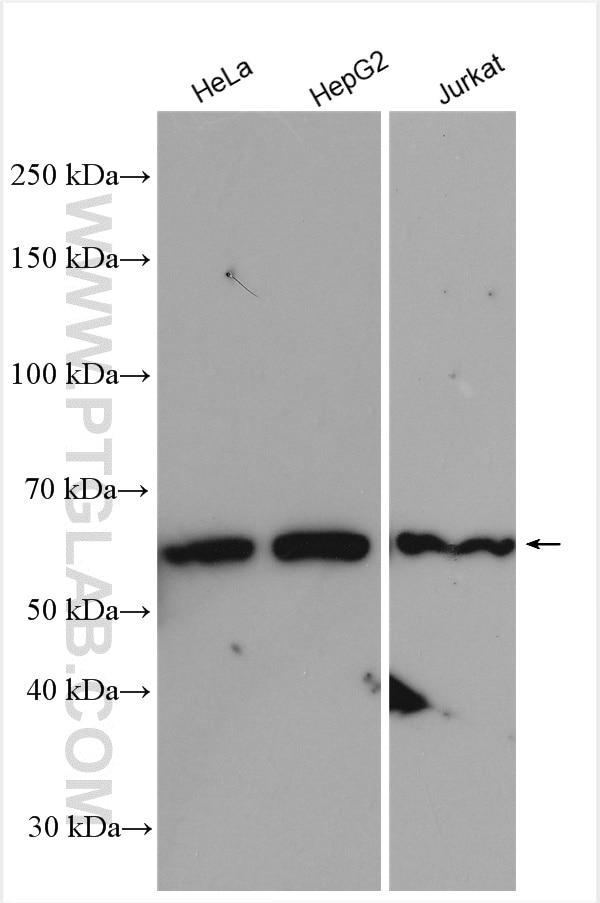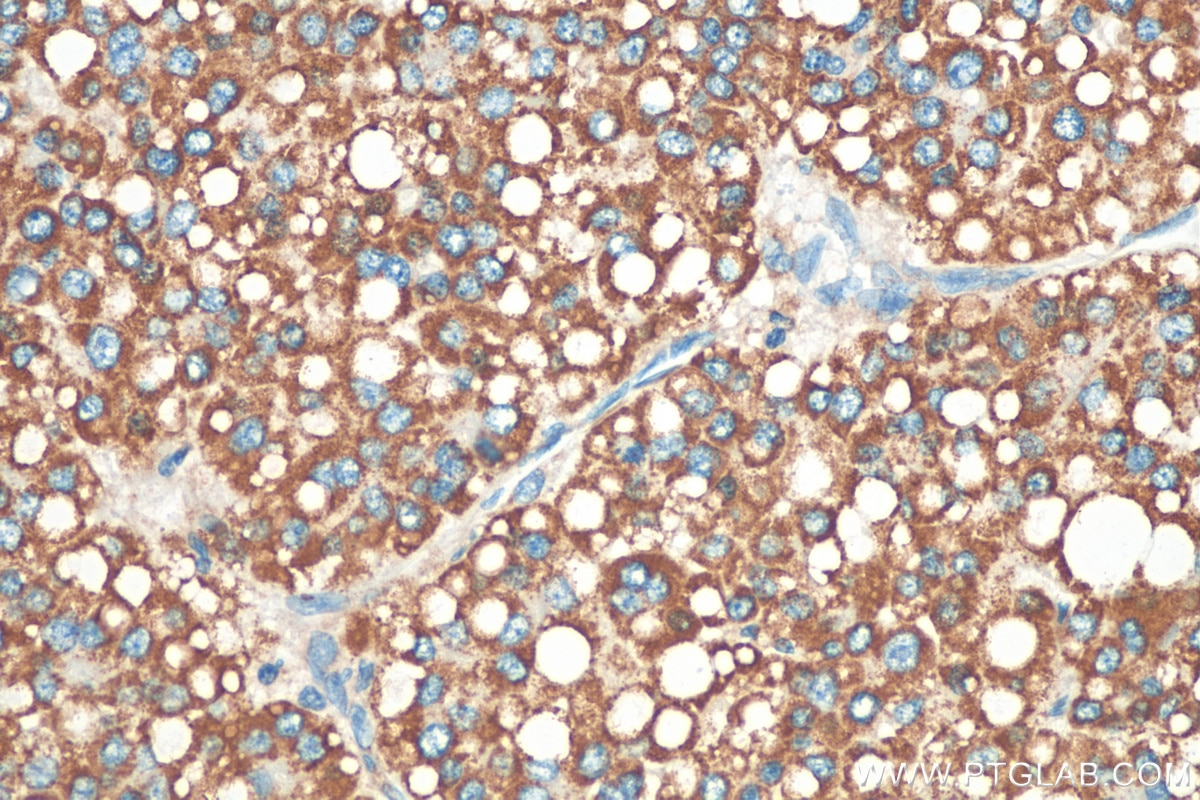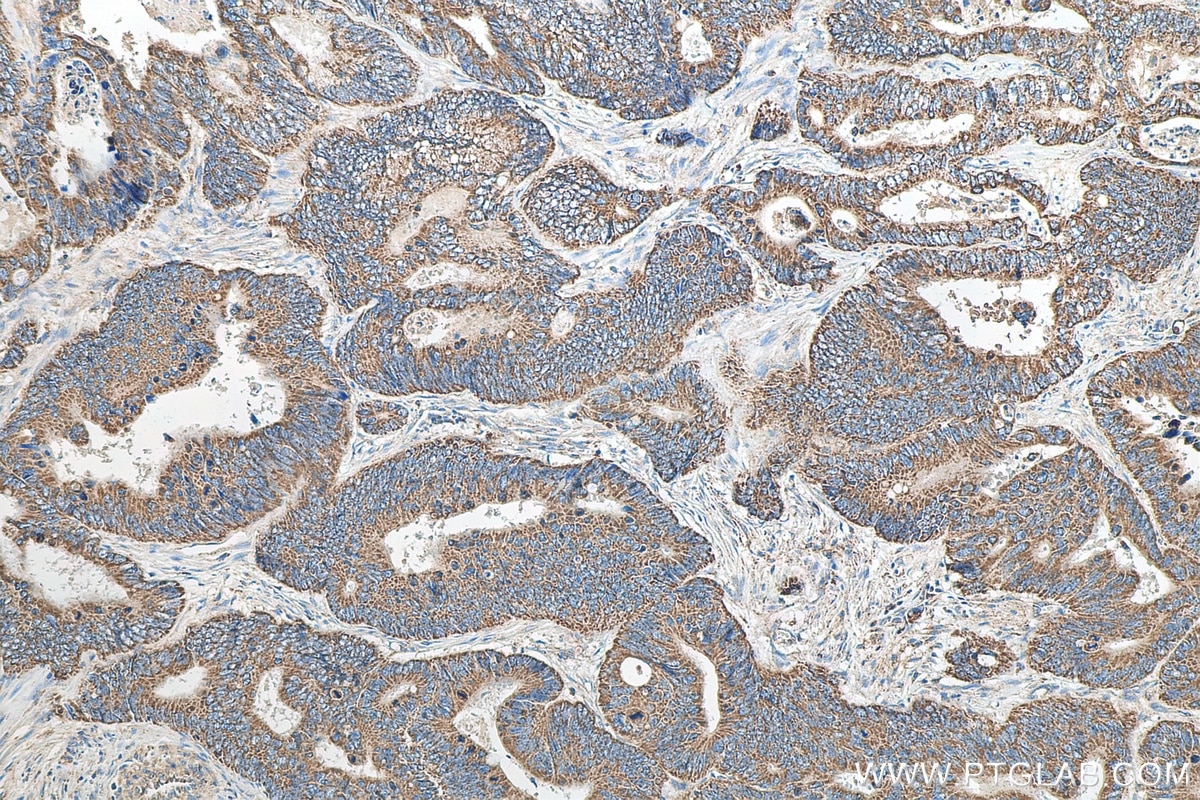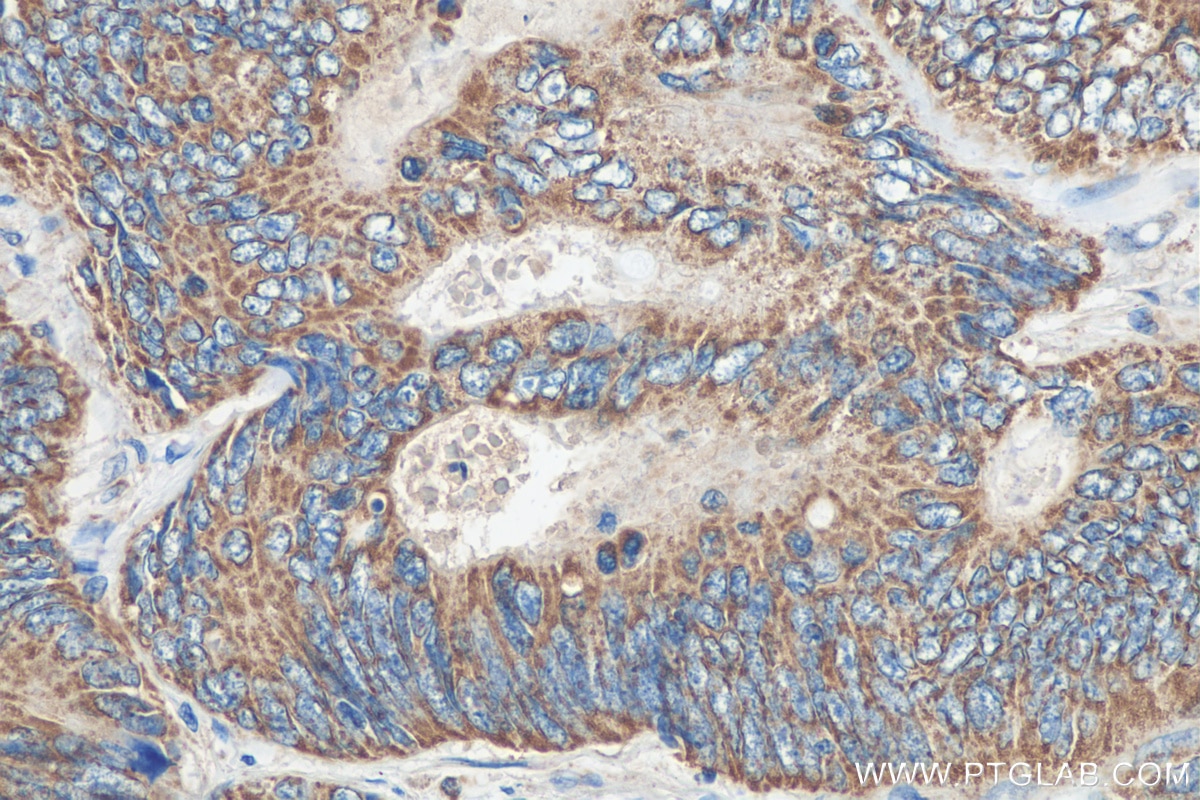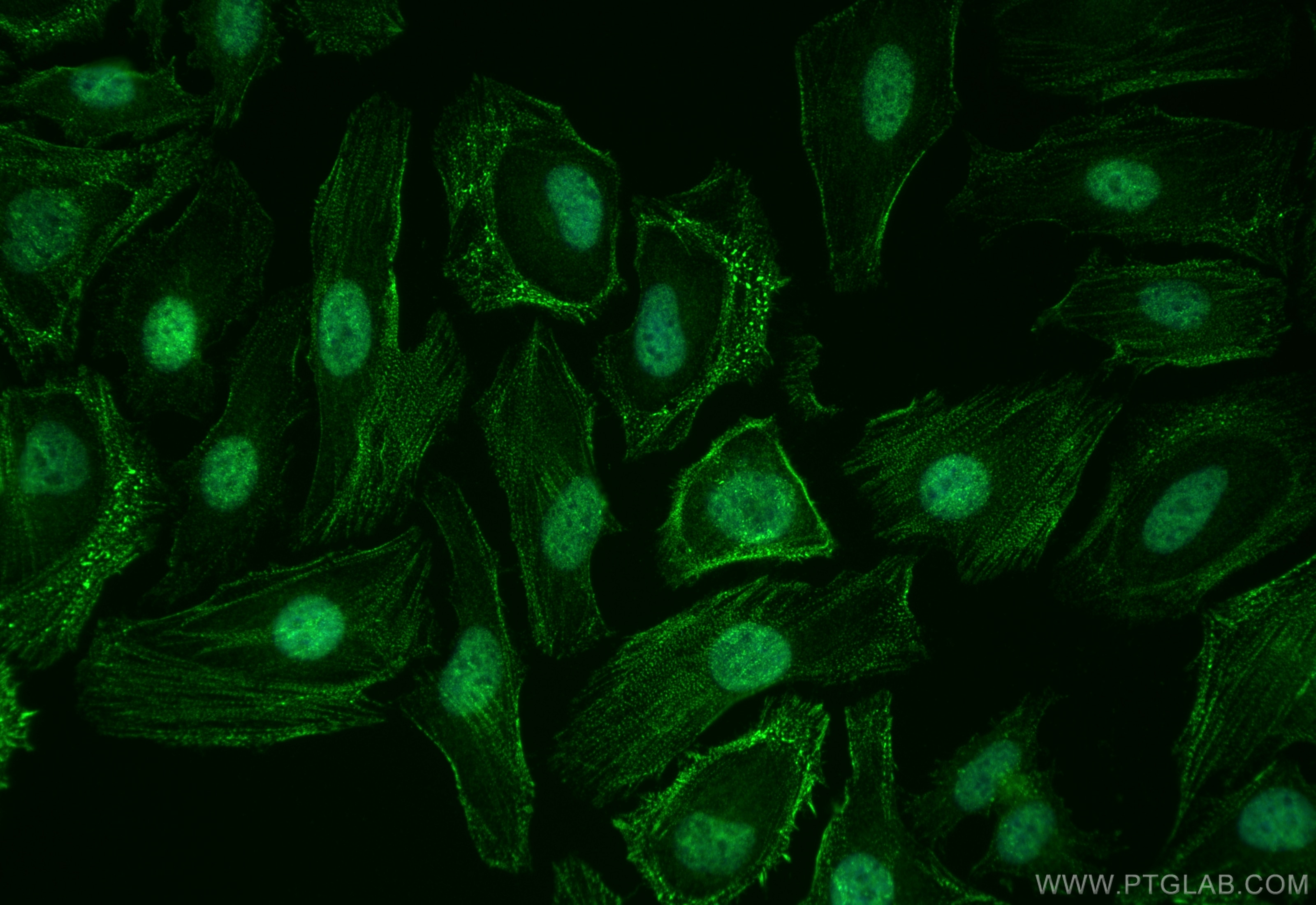- Featured Product
- KD/KO Validated
ZBP1 Polyklonaler Antikörper
ZBP1 Polyklonal Antikörper für WB, IHC, IF/ICC, ELISA
Wirt / Isotyp
Kaninchen / IgG
Getestete Reaktivität
human und mehr (1)
Anwendung
WB, IHC, IF/ICC, ELISA
Konjugation
Unkonjugiert
Kat-Nr. : 13285-1-AP
Synonyme
Geprüfte Anwendungen
| Erfolgreiche Detektion in WB | HeLa-Zellen, HepG2-Zellen, Jurkat-Zellen |
| Erfolgreiche Detektion in IHC | humanes Leberkarzinomgewebe, humanes Kolonkarzinomgewebe Hinweis: Antigendemaskierung mit TE-Puffer pH 9,0 empfohlen. (*) Wahlweise kann die Antigendemaskierung auch mit Citratpuffer pH 6,0 erfolgen. |
| Erfolgreiche Detektion in IF/ICC | HeLa-Zellen |
Empfohlene Verdünnung
| Anwendung | Verdünnung |
|---|---|
| Western Blot (WB) | WB : 1:1000-1:8000 |
| Immunhistochemie (IHC) | IHC : 1:50-1:500 |
| Immunfluoreszenz (IF)/ICC | IF/ICC : 1:400-1:1600 |
| It is recommended that this reagent should be titrated in each testing system to obtain optimal results. | |
| Sample-dependent, check data in validation data gallery | |
Veröffentlichte Anwendungen
| KD/KO | See 1 publications below |
| WB | See 21 publications below |
| IHC | See 5 publications below |
| IF | See 2 publications below |
Produktinformation
13285-1-AP bindet in WB, IHC, IF/ICC, ELISA ZBP1 und zeigt Reaktivität mit human
| Getestete Reaktivität | human |
| In Publikationen genannte Reaktivität | human, Ratte |
| Wirt / Isotyp | Kaninchen / IgG |
| Klonalität | Polyklonal |
| Typ | Antikörper |
| Immunogen | ZBP1 fusion protein Ag4119 |
| Vollständiger Name | Z-DNA binding protein 1 |
| Berechnetes Molekulargewicht | 46 kDa |
| Beobachtetes Molekulargewicht | 42-68 kDa |
| GenBank-Zugangsnummer | BC028218 |
| Gene symbol | ZBP1 |
| Gene ID (NCBI) | 81030 |
| Konjugation | Unkonjugiert |
| Form | Liquid |
| Reinigungsmethode | Antigen-Affinitätsreinigung |
| Lagerungspuffer | PBS with 0.02% sodium azide and 50% glycerol |
| Lagerungsbedingungen | Bei -20°C lagern. Nach dem Versand ein Jahr lang stabil Aliquotieren ist bei -20oC Lagerung nicht notwendig. 20ul Größen enthalten 0,1% BSA. |
Hintergrundinformationen
ZBP1(Z-DNA-binding protein 1), also named as DAI or DLM-1, is a nucleic acid sensor with some isoforms. It has been reported that ZBP1 can sense the viral nucleic acids of viruses and induce the death of infected cells to prevent virus transmission. ZBP1 can be activated and causes necrocytosis without viral infection, which is associated with nuclear Z-form nucleic acids. ZBP1 can be detected 42 kDa, 55 kDa, 68 kDa isoforms (PMID: 37012234, PMID: 9121465).
Protokolle
| PRODUKTSPEZIFISCHE PROTOKOLLE | |
|---|---|
| WB protocol for ZBP1 antibody 13285-1-AP | Protokoll herunterladen |
| IHC protocol for ZBP1 antibody 13285-1-AP | Protokoll herunterladenl |
| IF protocol for ZBP1 antibody 13285-1-AP | Protokoll herunterladen |
| STANDARD-PROTOKOLLE | |
|---|---|
| Klicken Sie hier, um unsere Standardprotokolle anzuzeigen |
Publikationen
| Species | Application | Title |
|---|---|---|
J Med Virol SARS-CoV-2 infection of polarized human airway epithelium induces necroptosis that causes airway epithelial barrier dysfunction | ||
Cell Death Dis Sensing of endogenous retroviruses-derived RNA by ZBP1 triggers PANoptosis in DNA damage and contributes to toxic side effects of chemotherapy | ||
Cell Death Dis ZBP1-mediated PANoptosis is a crucial lethal form in diverse keratinocyte death modalities in UVB-induced skin injury | ||
Biochim Biophys Acta Mol Basis Dis Ischemia-reperfusion injury induces ZBP1-dependent PANoptosis in endothelial cells | ||
J Agric Food Chem Integrative Gut Microbiota and Metabolomic Analyses Reveal the PANoptosis- and Ferroptosis-Related Mechanisms of Chrysoeriol in Inhibiting Melanoma | ||
Sci Rep Mitochondrial DNA damage and subsequent activation of Z-DNA binding protein 1 links oxidative stress to inflammation in epithelial cells.
|
Rezensionen
The reviews below have been submitted by verified Proteintech customers who received an incentive for providing their feedback.
FH Charity (Verified Customer) (02-15-2024) | this will probably work at a lower concentration but I have not tried it yet.
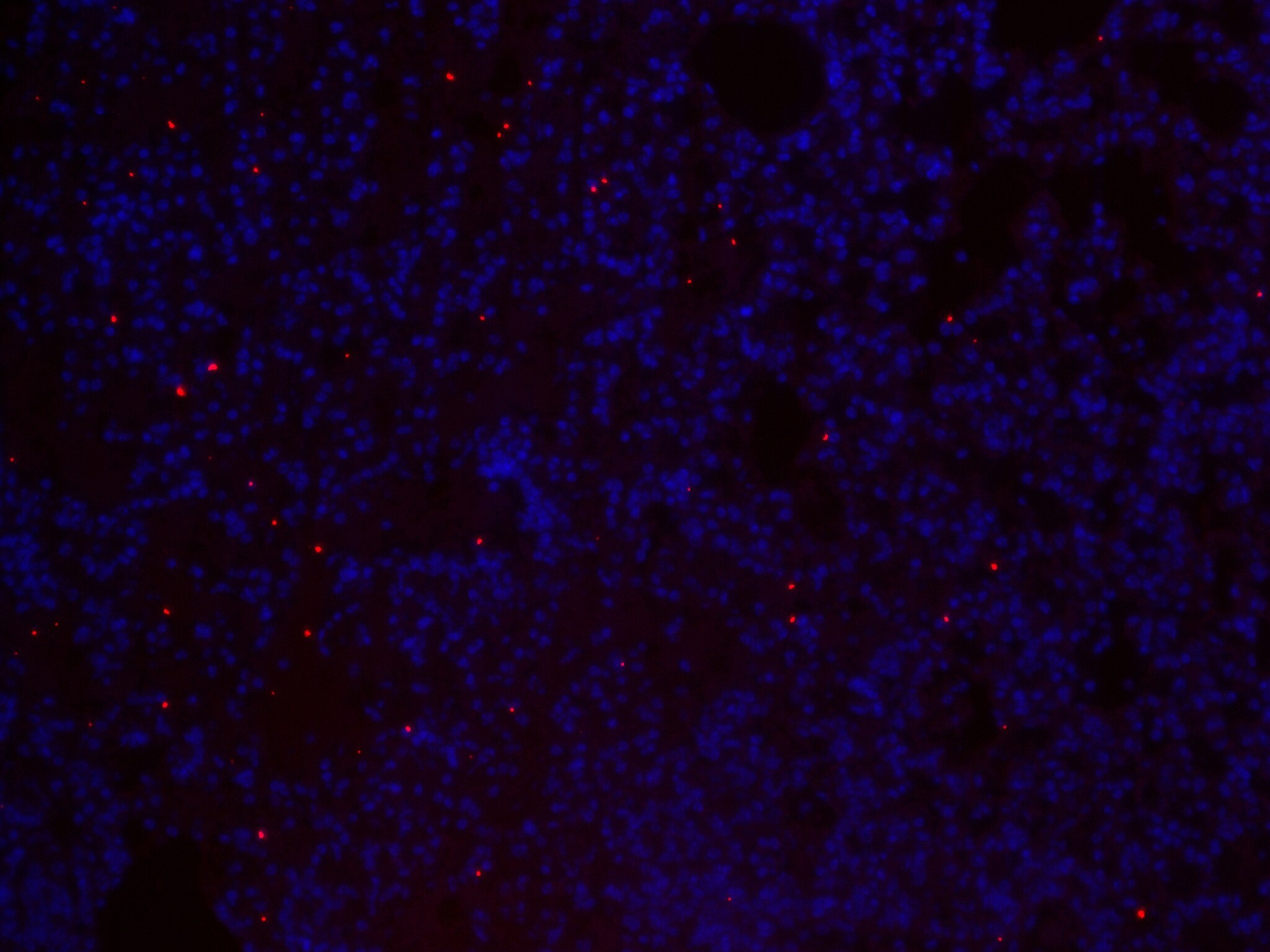 |
